Sand is one of the most popular dressings used in lawns, but what type of sand for lawns should be used and should be avoided?
Adding a thin layer of sand over grass is common practice in golf courses. It is a routine part of golf course maintenance known as top dressing. Sand top dressing limits thatch buildup in the turf grass of the sports fields. Thatch buildup can block nutrient, air, and water infiltration into the deeper soil layers. Thus, preventing your garden or lawn from blooming properly.
Applying a sand top dressing to lawns is an old tradition. However, with many gardeners and lawn owners adopting holistic garden techniques nowadays, some say that a sand top dressing can do more harm than good. Common lawn care questions often also include, “should I use a sand top dressing in my lawn?”, “is sand good for a lawn?” and “what type of sand is best for a lawn”?
So, if you are looking for answers to these and other such questions, you are in the right place. Happy reading!

Spreading sand over golf courses is an integral part of golf course maintenance.
Reasons For Top Dressing
While spreading sand over a lawn does not add any nutritional value, it is still a great way to level out low areas and uneven ground surfaces in the lawn. A thin layer of top dressing can also help fix up divots in sports fields and cover exposed tree roots in a garden. So, whether you are a lawn owner trying to fix a bumpy lawn or a sports field owner, there will be many occasions when you will need some sort of top dressing for obvious reasons.

Top dressing is a great way to level off uneven areas in a big lawn.
However, it is also important to keep in mind that sand on its own will not improve the nutritional value of the lawn soil as it does not contain any nutrients. Some gardeners also debate that adding sand can cause watering and compaction issues in the lawn soil as well. In addition, routinely adding thin layers of sand can cause sand to pile up in the yard, killing the grass below. Also, a top dressing for home lawn care is usually not recommended unless really needed.
Top dressing home lawns has little agronomic benefits. If needed, top dressing should be done with organic matter such as compost instead of sand. It will not only fix the filling issues of your lawn, but the nutrients present in compost will also increase the fertility of the soil.
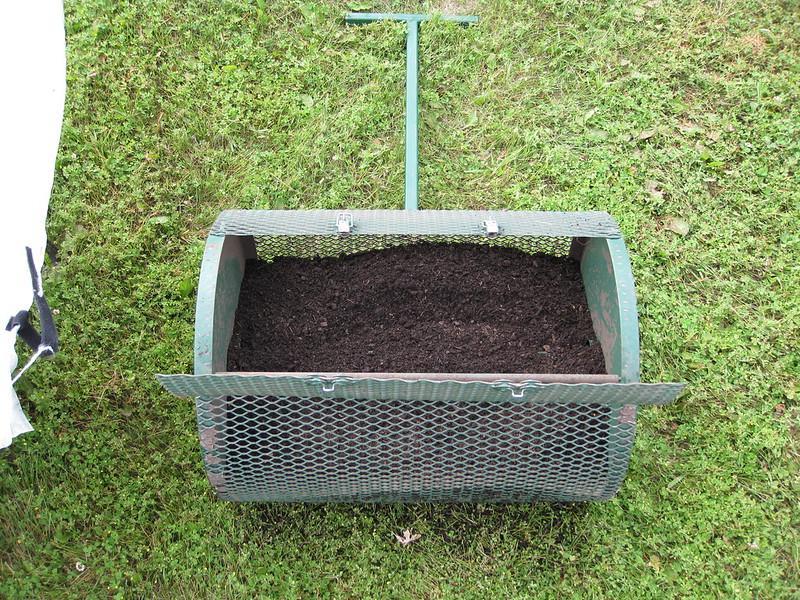
It is recommended to use organic matter such as compost for top-dressing in a home lawn.
The top dressing with sand is so famous in sports because the grass used there is adapted to survive in sandy conditions. It also receives more care and maintenance than the average home lawn. Also, regular watering and use of fertilizers make up for the deficiencies caused by sand in sports settings.
What Type Of Sand Is Best For Lawns?
To answer this question, we will have to dig a bit deeper and learn about the different types of sands that can be used as a top dress. Also, the choice of the best sand will heavily depend on the soil quality of a lawn and the purpose for which the lawn is being used for.
However, whenever choosing, make sure only to use fine screened sand free of small pebbles and rocks. Also, using sand from an unknown source can introduce weeds that can cause issues for the lawn or garden for the most obvious reasons.
For instance, beach sand can not be used for top dressing or other uses in a lawn. It is because beach sand may contain debris and dirt, which can cause drainage and cleanliness issues when put onto the ground. Nonetheless, here are the most commonly used types of sand that are used in lawns:
Mason Sand
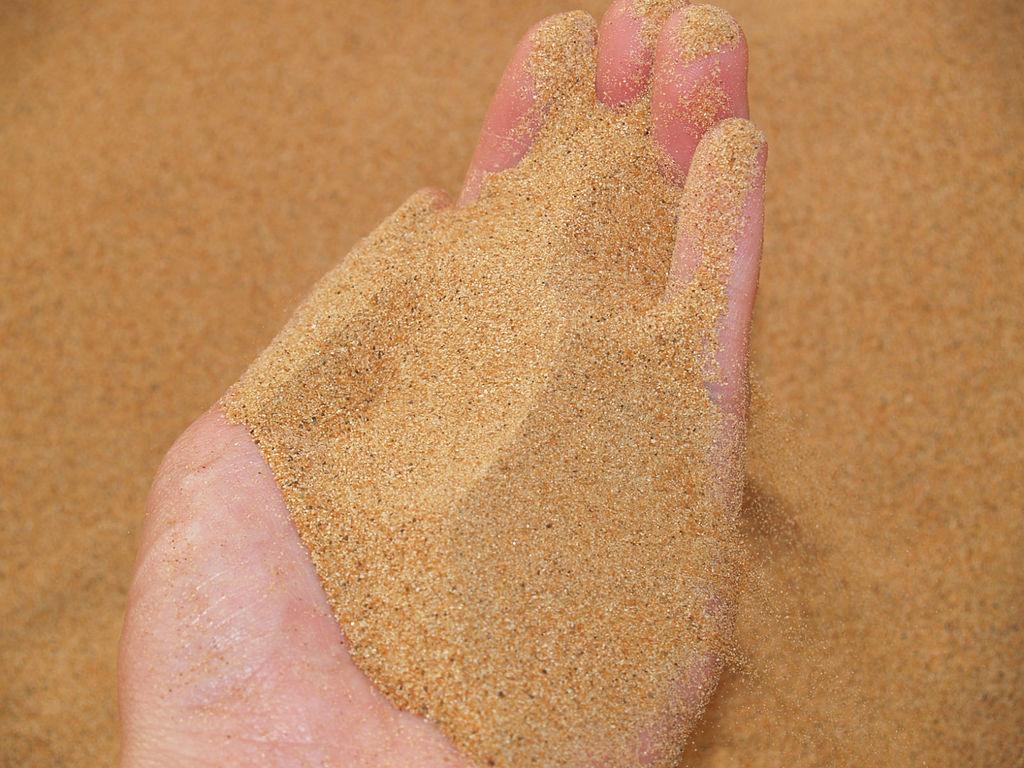
Because of its uniform and small grains, Masonry sand is aesthetically very pleasing.
Mason sand is the most common and most widely used sand in the construction industry. It is used to make buildings, fill pavements, and level ground, among other uses. The extremely fine small grains and their almost uniform size make the mason sand aesthetically pleasing. It is also often used in sandboxes where children love playing with it.
One of the most obvious reasons to use mason sand in lawns is its availability. Also, it is not very expensive, which makes it a great choice. Additionally, because of its use in construction and thus fin processing, the sand is free of stones, rocks, and dirt, keeping the lawn clean.
Sugar Sand
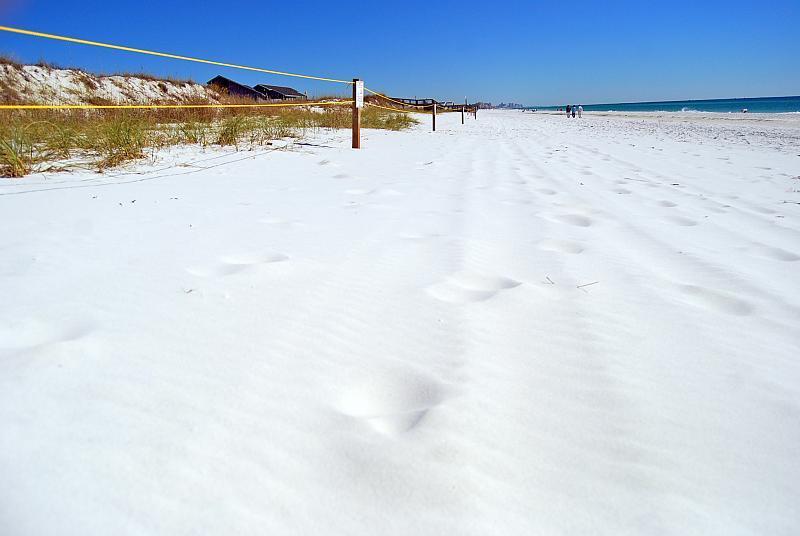
When added to the green of a lawn, sugar sand can look aesthetically very pleasing.
It is the white and extremely fine-textured sand that is present at sugar beaches. Because of its bright white coloration, it looks a lot nicer than the other dull brown or gray types of sand. Also, it adds a nice touch to the scenery of a lawn or a sports field when combined with the green of the grass.
However, this type of sand may not be ideal for most people. It is because adding sand from the beach can introduce debris, dirt, and weeds. Also, the cost of sand transporting service will make using it extremely costly.
Fill Sand
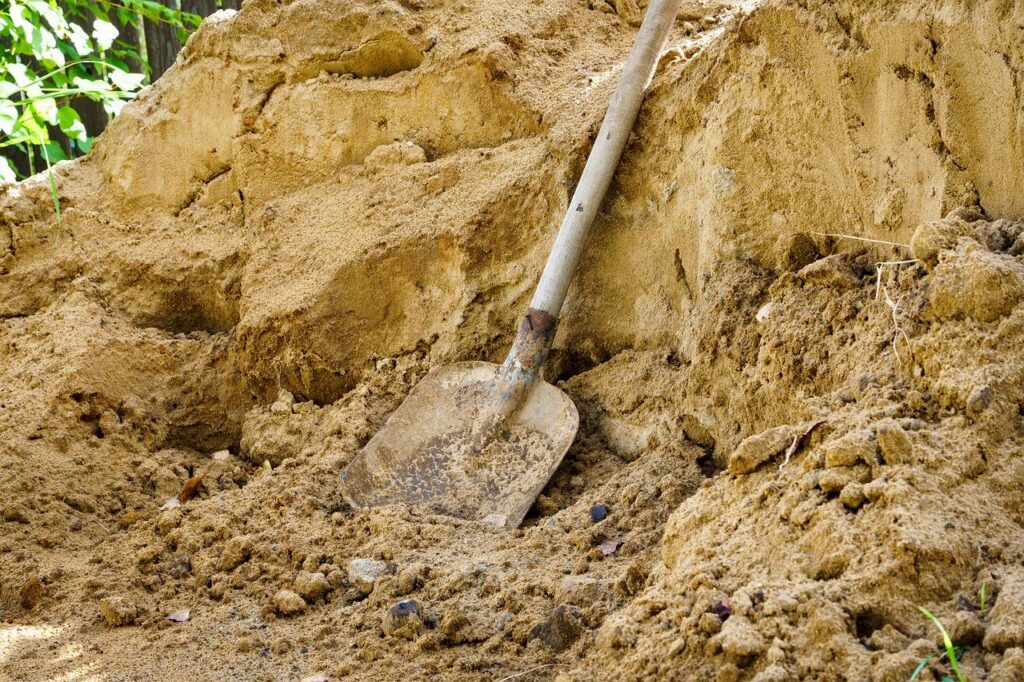
Fill sand is the best when it comes to filling empty holes in the lawn.
As the name suggests, fill sand is perfect for filling. However, unlike the other types of sands that are mentioned above, it is not obtained from a single source. In fact, it is a mix of multiple different types of sands mixed together. One important thing to keep in mind is that it is not processed sand.
So, it might be clumpy and have impurities such as stones and rocks. However, it is very compact and can be a great option to fill holes in your lawn. Also, it is basically the same price as mason sand which makes it very affordable as well.
Other Top Dressing Materials To Use In Lawns
Topsoil

Using topsoil can save you from the trouble of finding a suitable top dressing for your lawn
If you are ever in doubt about which type of top dressing material you should use in your lawn, you can use the same soil that is already present in your lawn.
The term “topsoil” refers to the upper two to eight inches of soil. It contains more nutrients and fertility than any other part of the soil. So, suppose you have any holes, uneven surfaces or leveling problems in your lawn. In that case, you can use topsoil without any hesitation.
The quality of topsoil can be variable across different sources. Therefore, it is better to obtain your topsoil from a location where the pH is mildly acidic to slightly alkaline. Another advantage of using topsoil is that you won’t risk changing the composition of your lawn soil.
Related: Everything You Need To Know About Sand Plants (Including Photos)
Compost
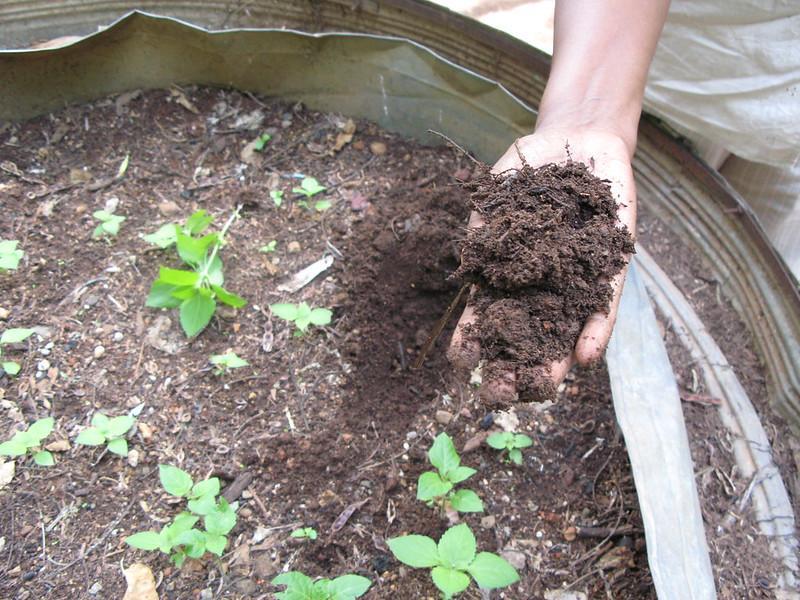
Compost is not only a great top dressing material but also an excellent fertilizer as well.
Compost is another excellent material for top dressing lawn or garden soil. It is decomposed organic matter made from shredded twigs, leaves, and unused scraps of fruits and vegetables. Gardeners often call it “the black gold” because of its immense benefits in the garden. Adding compost to clay soil makes it easier to work with the plants.
Also, it is an excellent way of increasing the fertility of the soil by recycling natural materials. It is also very easy to make compost. Just dig a hole, shove some fallen twigs, leaves, and kitchen scraps, and you are good to go. After a month, you will have obtained yourself one of the best fertilizers around and some saved money!
Crumb Rubber
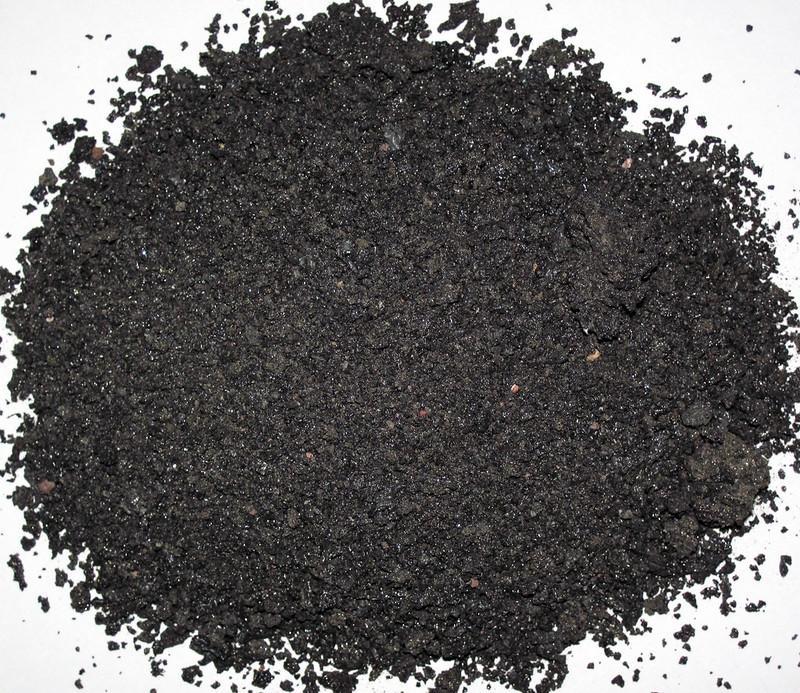
Crumb rubber can be added to increase water infiltration in the lawn.
Crumb rubber is another material that lawn care specialists and gardeners suggest as a top dressing. It is a resin-bound surfacing material frequently used in playgrounds and walkways. It is obtained from recycling rubber into very fine particles. Since crumb rubber is not compact, it enhances water flow deep into the soil.
Also, one thing to keep in mind while using crumb rubber is the fact that it is a synthetic compound. Therefore, it will not degrade or decompose, and adding too much crumb rubber can decrease the quality of your soil.
When And How To Add Sand To The Lawn?
For lawn owners, adding sand can be a regular part of the lawn care program, while it is a question of demand for golf course owners. Here in this section, we will focus on home lawn owners.
Frequent use of lawn mowers or lawn parties can often leave a bumpy ground behind. To deal with this issue, you might want to add sand or other suitable top dressing material according to your need. Depending on the lawn size and holes in the ground, you will have to measure how many yards of top dressing you need. Here is how you can top dress your lawn:
Clean The Area
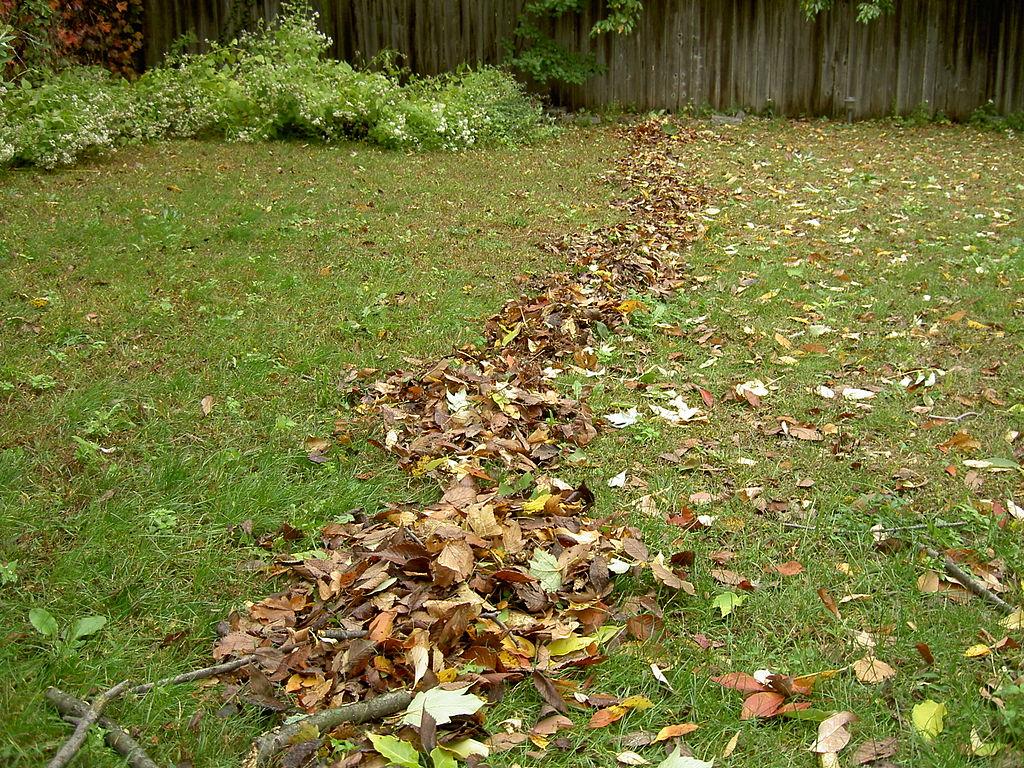
You can use the fallen leaves to make compost after cleaning the lawn.
The first thing you need to do is clean your soil of any waste material, scraps, and weeds. It is best not to use herbicides for removing weeds and instead do it manually. Also, you need to aerate the soil. One great way of doing both things at once is to use aerating shoes.
Aerating shoes are nothing more than just a fancy name for shoes with numerous nails underneath. By getting these shows, you can aerate and pluck out the leaves or any other materials lying around, all at once.
Mow The Grass
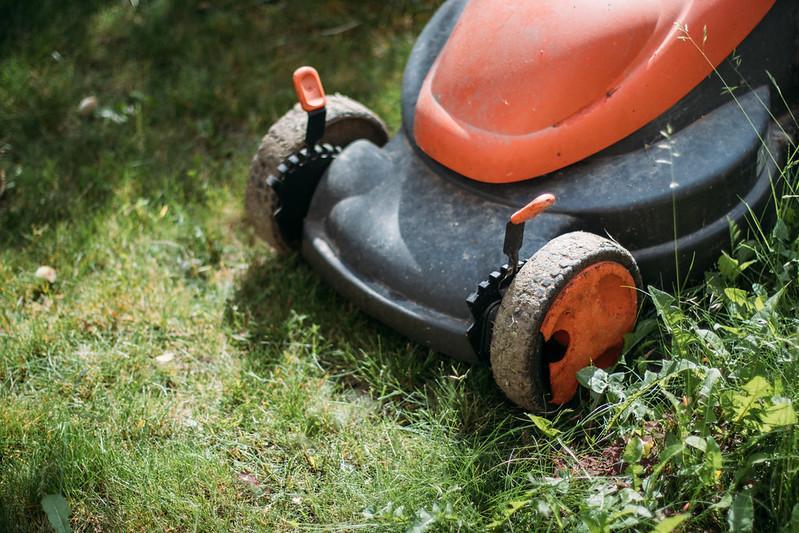
Make sure you mow the lawn evenly for the optimal spreading of the sand.
The next thing on the list is to mow the grass. You must mow the grass short enough to make the surface visible to you. Doing it manually can take a lot of time, and it will also result in uneven cutting of the grass.
Uneven cutting can interfere with the uniform spreading of sand later on. So, it is best to do it using a lawn mower. It will save time and make sure that the grass is evenly cut everywhere.
Adding Sand
After mowing, you can add the sand. Make sure the layer is around half an inch thick, and depending on the type of lawn, you can use a sprinkler or water can afterward.
Once you have done that, use a raker to level off your lawn. Then, relax and watch your lawn as it flourishes.
Frequently Asked Questions (FAQs)
Can I add a thin layer of sand top dressing to the clay soil?
Adding sand as a top dressing to clay soil is not good. It has a cement-like effect on the soil, ruining your lawn.
Can I use sharp sand to level my lawn?
Sharp sand is a surprisingly good top dressing. It can loosen up the soil and make channels in the ground for the excess water to drain through.
Can I use beach sand on my lawn?
Using beach sand is not a good idea, as it can contain debris and other waste material. Also, beach sand is high in salts which can seep through with water and ruin the composition of your lawn soil.
Sources For Further Reading
- Topdressing A Home Lawn. Retrieved 4 April 2022, from https://hgic.clemson.edu/factsheet/topdressing-a-home-lawn/
- Lawn Aeration and Topdressing. (2022). Retrieved 4 April 2022, from https://hort.extension.wisc.edu/articles/lawn-aeration-and-topdressing/
- Topdressing | Sports Field Management. (2022). Retrieved 4 April 2022, from http://safesportsfields.cals.cornell.edu/topdressing
Now that you know what type of sand for lawns you should use, make sure to also read our other articles:
How to Plant Bermuda Grass | Bermuda Grass Growth Stages and Care
11 Outdoor Foliage Plants To Arrange Your Garden Like A Professional Landscape Designer
Gardening In August: What Plants To Grow At The End Of Summer







